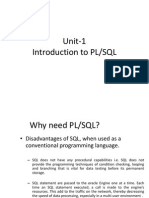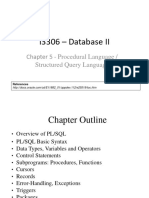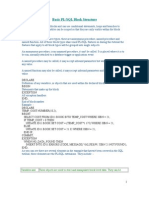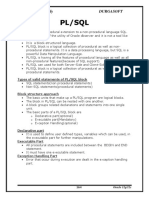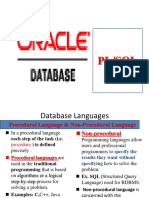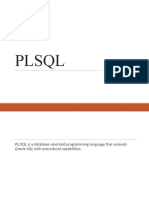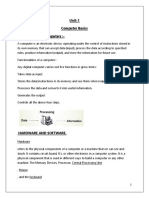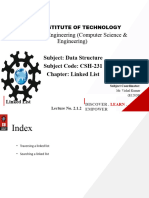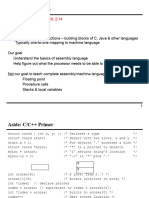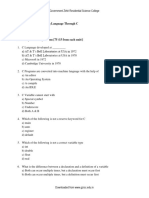0% found this document useful (0 votes)
258 views12 pagesUnit-5 Dbms Notes
The document provides an overview of PL/SQL, detailing its history, fundamental concepts, and programming structures. It covers the evolution of PL/SQL from its initial version to its current capabilities, including data types, variable declaration, control structures, and exception handling. Additionally, it explains the use of cursors, data manipulation, and transaction control statements within PL/SQL programming.
Uploaded by
Brindha SriCopyright
© © All Rights Reserved
We take content rights seriously. If you suspect this is your content, claim it here.
Available Formats
Download as DOCX, PDF, TXT or read online on Scribd
0% found this document useful (0 votes)
258 views12 pagesUnit-5 Dbms Notes
The document provides an overview of PL/SQL, detailing its history, fundamental concepts, and programming structures. It covers the evolution of PL/SQL from its initial version to its current capabilities, including data types, variable declaration, control structures, and exception handling. Additionally, it explains the use of cursors, data manipulation, and transaction control statements within PL/SQL programming.
Uploaded by
Brindha SriCopyright
© © All Rights Reserved
We take content rights seriously. If you suspect this is your content, claim it here.
Available Formats
Download as DOCX, PDF, TXT or read online on Scribd
/ 12




